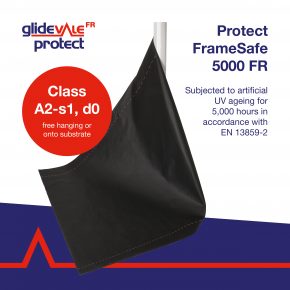
Why architects and specifiers must ensure door opening solutions enable inclusivity?
 Architects and specifiers must ensure that door opening solutions adhere to the guidelines governing inclusive design, warns Eryl Jones, MD of the ASSA ABLOY Door Hardware Group. Otherwise, the alternative is potential discrimination charges, costly legal disputes and damaged brand reputations.
Architects and specifiers must ensure that door opening solutions adhere to the guidelines governing inclusive design, warns Eryl Jones, MD of the ASSA ABLOY Door Hardware Group. Otherwise, the alternative is potential discrimination charges, costly legal disputes and damaged brand reputations.
“When talking about inclusive design, many people immediately think of those with a disability or specific, specialist requirements. While inclusive design encompasses the needs of these people, its key objective is to make a site inclusive for all, no matter what.
In fact, despite public perception and the wheelchair being the symbol for accessibility, less than 8 per cent of disabilities require the use of a wheelchair[1].
Whether it’s the elderly, disabled or children, everyone should be able to access and use a building and its facilities easily and safely.
Inclusive design is a key consideration for most architects and specifiers today, ensuring any barriers that might prevent an individual from using an environment freely and easily are removed.
This approach must be reviewed in line with the guidelines governing inclusive design, which includes Approved Document M, the Equality Act 2010 and, crucially, BS 8300-1 and 8300-2:2018, which sets out how buildings should be designed, constructed and maintained to create an accessible and inclusive environment for all. It applies to both new builds and refurbishments.
As such, inclusive design is viewed by most architects and specifiers nowadays as a non-negotiable. While it is the owner that ultimately bears responsibility for the design of a building, should a legal dispute arise then an architect or specifier would be called upon to explain why a solution was recommended.
In the event of a discrimination claim, those that can demonstrate that they have adhered to standards such as BS 8300-1 and 8300-2:2018 will be on safer ground than those that cannot.
Compliant solutions
There are many considerations that a door opening solution needs to take into account to be compliant with BS 8300-2:2018, for example, such as opening and closing forces.
For instance, to enable independent access through a door, the opening force – when measured at the leading edge of the door – should be no greater than 30 N, when moving from the closed position to 30° open.
Then, the opening force required from 30° to 60° should be no more than 22.5 N. Then, in terms of the maximum closing force exerted by a controlled door closing device, this should be within 0° and 15° of final closure.
Architects and specifiers should also beware of some of the common issues with those door opening solutions available on the market that claim to comply with standards such as BS 8300-2:2018, but in actual fact do not.
For example, many suppliers will claim to offer compliant solutions by ‘winding down’ a door closer and its spring to power setting EN1. However, while this may help people open a door more easily, it will not provide the necessary closing force.
As a result, the door will not deliver the safety and security assurances demanded of an inclusive environment. It is also important to note that fire doors must have a minimum power setting of EN3 at all times, to meet these needs.”
To help architects and specifiers understand the guidelines governing inclusive design, ASSA ABLOY Opening Solutions UK & Ireland has published a free new white paper.
Titled Inclusive design – why should you care?, it can be downloaded via clicking ‘ASSA ABLOY Door Hardware Group’ in the opening paragraph.
It provides best practice advice on how to ensure door opening solutions can meet the requirements for inclusive building designs, and the risks of not complying with these.
For more information on how ASSA ABLOY Opening Solutions UK & Ireland can help, email [email protected] or call 0845 223 2124.
Source
[1] Disability Sport, ‘Facts and Figures About Disabled People in the UK’, http://www.disabilitysport.org.uk/facts-and-figures-about-disabled-people-in-the-uk.html
Latest news

26th November 2024
Crown Paints supports restoration of renowned local landmark
Over the past three months, Crown Paints has supported the transformation of St. Mary’s Lighthouse, a much-loved historical landmark on the North Tyneside coast.
Posted in Articles, Building Industry News, Building Products & Structures, Case Studies, Interiors, Paints, Paints, Coatings & Finishes, Restoration & Refurbishment, Retrofit & Renovation
26th November 2024
Keller Kitchens extends carbon farming collaboration
Since 2021, DKG (parent company of Keller Kitchens and Bruynzeel) and ZLTO (association of farmers and horticulturists in the Dutch provinces Zeeland, North Brabant and South Gelderland) have been working together on a five-year pilot project – ‘Carbon Farming for CO2-storage in farmland’.
Posted in Articles, Building Associations & Institutes, Building Industry News, Building Products & Structures, Building Services, Facility Management & Building Services, Innovations & New Products, Interiors, Kitchens, Restoration & Refurbishment, Site Preparation, Sustainability & Energy Efficiency, Waste Management & Recycling
26th November 2024
Vent-Axia Offers Ventilation Solutions for Landlords to Tackle Condensation and Mould
Leading British ventilation manufacturer Vent-Axia can offer expert advice and a range of ventilation options to help landlords meet new legislation…
Posted in Air Conditioning, Articles, Building Industry News, Building Products & Structures, Building Regulations & Accreditations, Building Services, Damp & Waterproofing, Facility Management & Building Services, Health & Safety, Heating Systems, Controls and Management, Heating, Ventilation and Air Conditioning - HVAC, Retrofit & Renovation
26th November 2024
Glidevale Protect expands its fire rated wall membrane range
Glidevale Protect has strengthened its flame retardant offering with the launch of its Protect FrameSafe 5000 FR external wall membrane designed for open façade cladding applications.
Posted in Articles, Building Industry News, Building Products & Structures, Building Regulations & Accreditations, Building Services, Cladding, Facades, Health & Safety, Innovations & New Products, Membranes, Restoration & Refurbishment, Retrofit & Renovation, Walls
 Sign up:
Sign up: